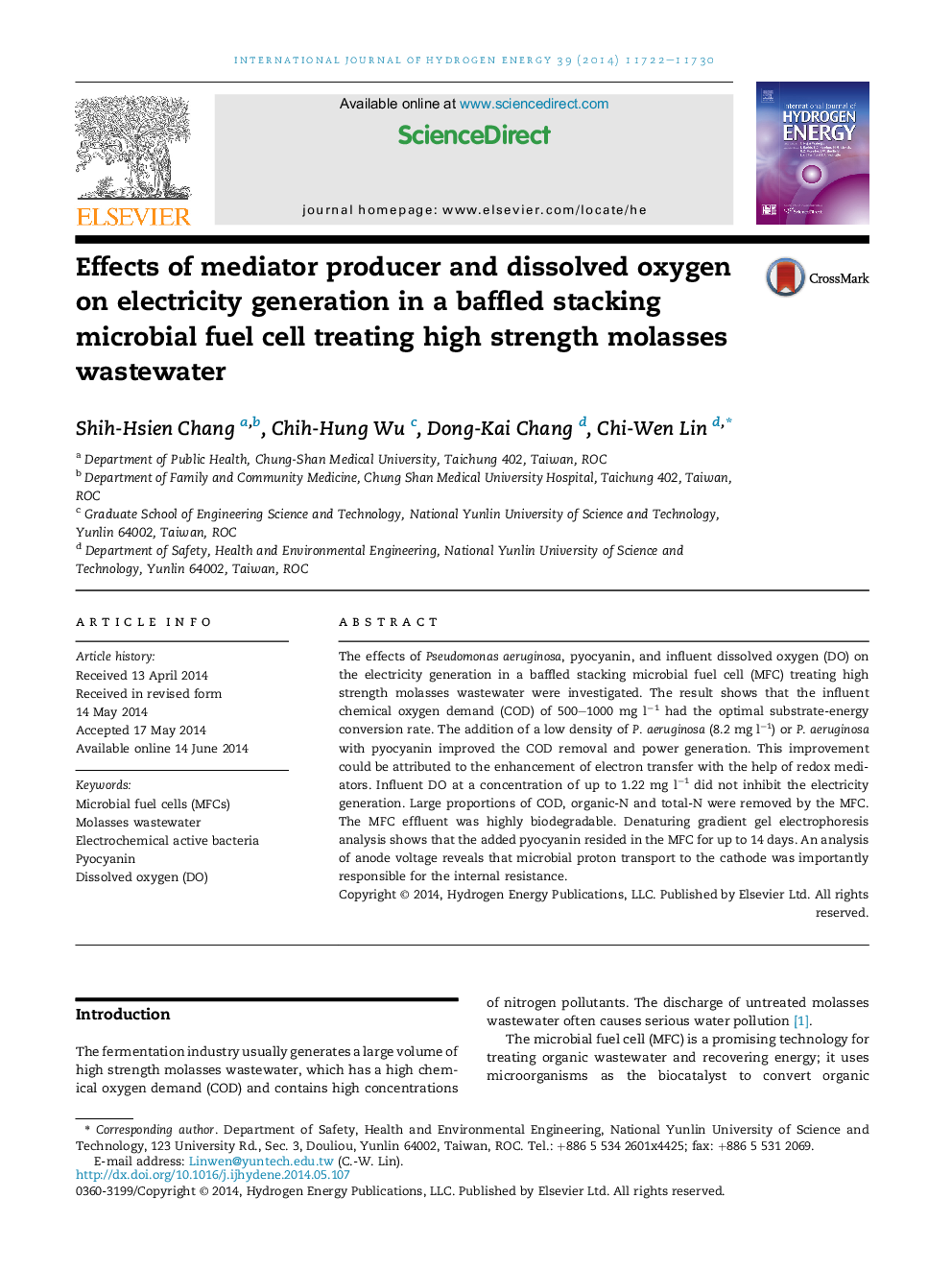| کد مقاله | کد نشریه | سال انتشار | مقاله انگلیسی | نسخه تمام متن |
|---|---|---|---|---|
| 1273193 | 1497487 | 2014 | 9 صفحه PDF | دانلود رایگان |
• Added degraders and pyocyanin improved the performance of the wastewater system.
• At low oxygen level, electricity and organics removals increased with inlet oxygen.
• Microbial community analysis reveals that added degraders grew well in the system.
• The proton transfer critically influenced the internal resistance of the system.
The effects of Pseudomonas aeruginosa, pyocyanin, and influent dissolved oxygen (DO) on the electricity generation in a baffled stacking microbial fuel cell (MFC) treating high strength molasses wastewater were investigated. The result shows that the influent chemical oxygen demand (COD) of 500–1000 mg l−1 had the optimal substrate-energy conversion rate. The addition of a low density of P. aeruginosa (8.2 mg l−1) or P. aeruginosa with pyocyanin improved the COD removal and power generation. This improvement could be attributed to the enhancement of electron transfer with the help of redox mediators. Influent DO at a concentration of up to 1.22 mg l−1 did not inhibit the electricity generation. Large proportions of COD, organic-N and total-N were removed by the MFC. The MFC effluent was highly biodegradable. Denaturing gradient gel electrophoresis analysis shows that the added pyocyanin resided in the MFC for up to 14 days. An analysis of anode voltage reveals that microbial proton transport to the cathode was importantly responsible for the internal resistance.
Journal: International Journal of Hydrogen Energy - Volume 39, Issue 22, 24 July 2014, Pages 11722–11730
